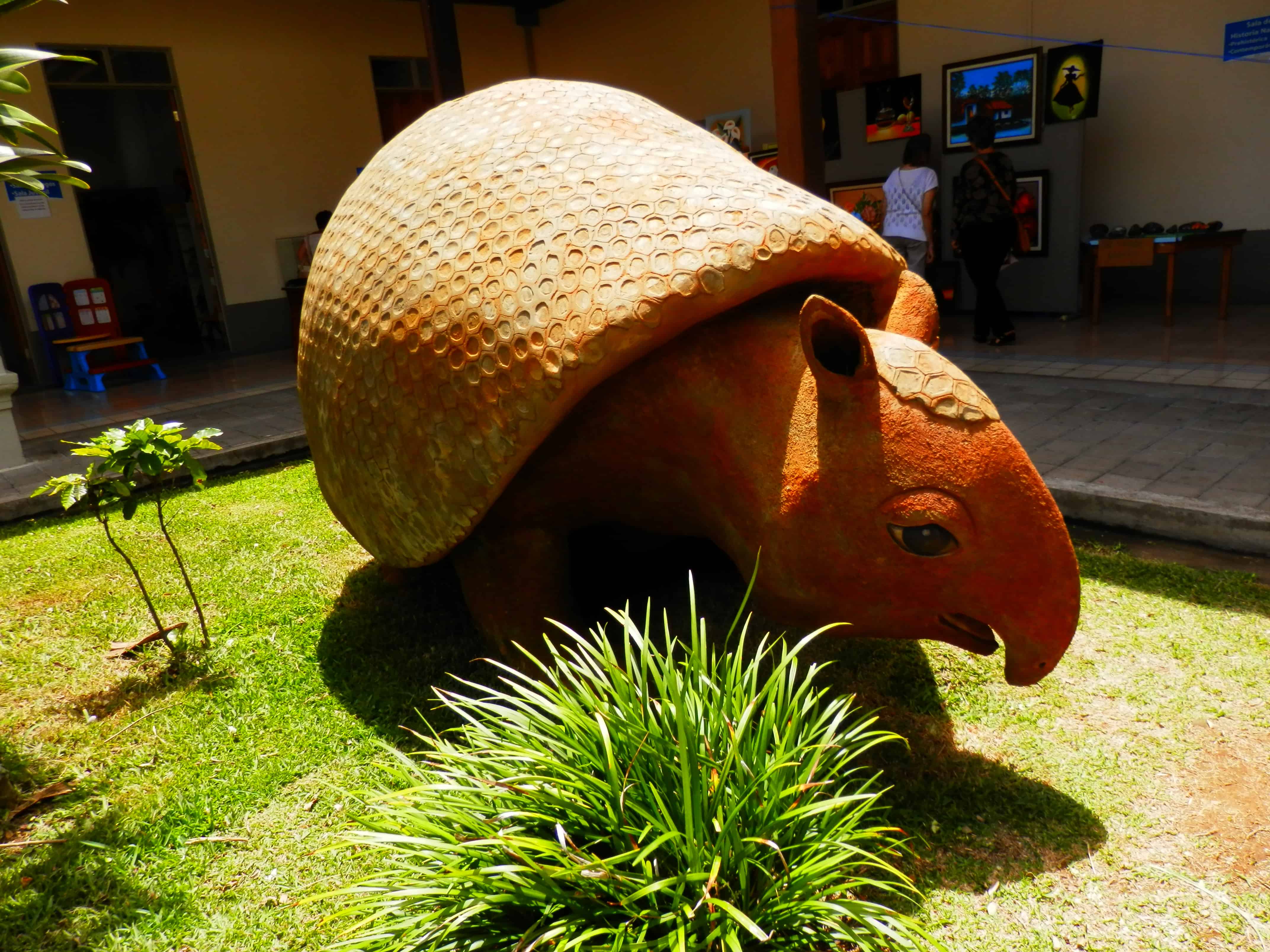A super-sized armadillo (Glyptotherium arizonae) weighing one ton and measuring close to three meters long has joined the immobile menagerie at the San Ramón Museum. The collection include replicas of a huge white sloth and a beach full of sea turtles in this landlocked city.
The armadillo is a replica of those that roamed the area 10,000 years ago and is based on fossilized bone fragments discovered near San Ramón and Palmares, both Alajuelan towns west of the Costa Rican capital. The relics themselves are now in the National Museum in downtown San José, explained Liz Brenes, biologist with the University of Costa Rica’s San Ramón campus and the creator of the animal displays.
Giant armadillos did wander around Central America but disappeared as a result of climate change and other factors. They ate insects and lived in forests and water plains that disappeared with the coming of the ice age. Large armadillos slightly less than two meters long have also been found in Colombia and other parts of South America.
Located in the patio of the museum, surrounded by grass, the armadillo is for everyone, and its friendly features invite people to come close. It cannot be damaged by hands or weather; the public can touch it, pet it, take photos with it and get close to it. Most museum exhibits have a ‘no touch’ rule to prevent damage, but, says Brenes, “it is through understanding biology that people will be moved to protect it.”
Extensive research took place before the physical work of construction began, including studying diagrams based on bone fragments and creating a vision of what the world looked like 10,000 years ago. Then the project was turned over to husband-and-wife artists Andrés Badilla and Susana Villalobos, who built the armadillo on their front lawn.
It began with a wire frame covered with screening, then a layer of cement and Bondex to make the basic form. After a second layer of cement to form the details and a coat of paint, the fun part began: transporting this monster creature to the museum seven blocks away. With an audience of curious neighbors and strangers, it took eight strong men to get the armadillo in position for a crane to lift it onto a truck bed. Then it had to be lifted out of the truck and set in its final resting place.
“This will be a permanent display,” said Brenes.
Giants of the armadillo world disappeared eons ago, but this one will endure for years to come.
The Museum of San Ramón is across from the Central Park and diagonal from the Cathedral, open Tues.-Fri., 10 a.m.-6 p.m. Free. San Ramón is 30 miles west of San José along the Pan American highway. The museum and the José Figueres Cultural Center one block from the museum make a pleasant one-day tour.








